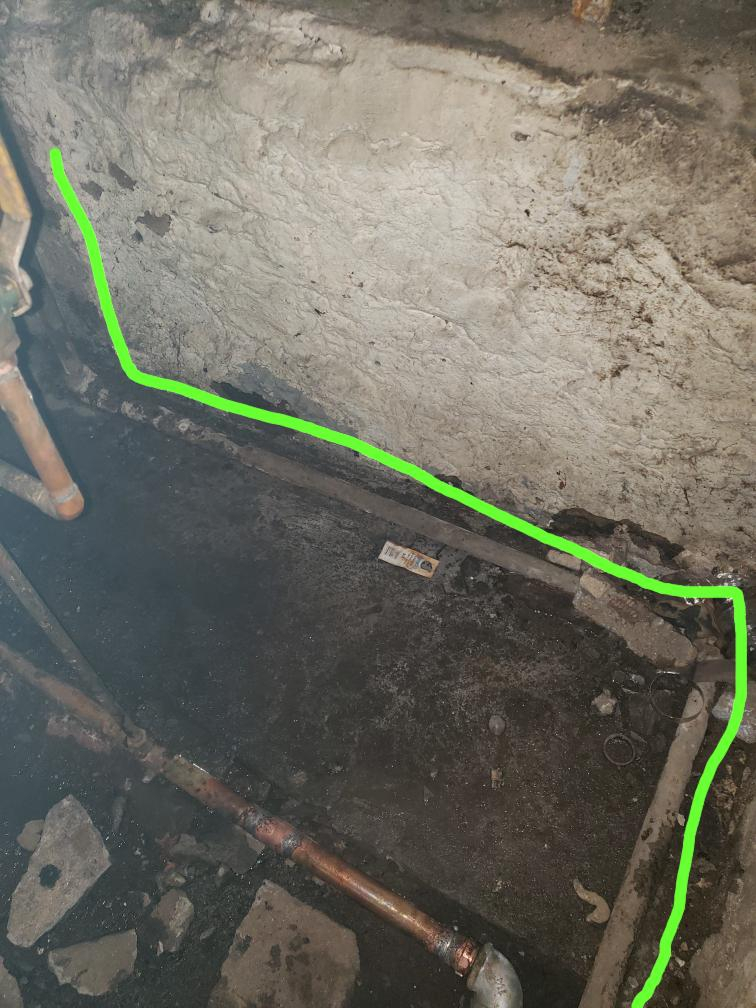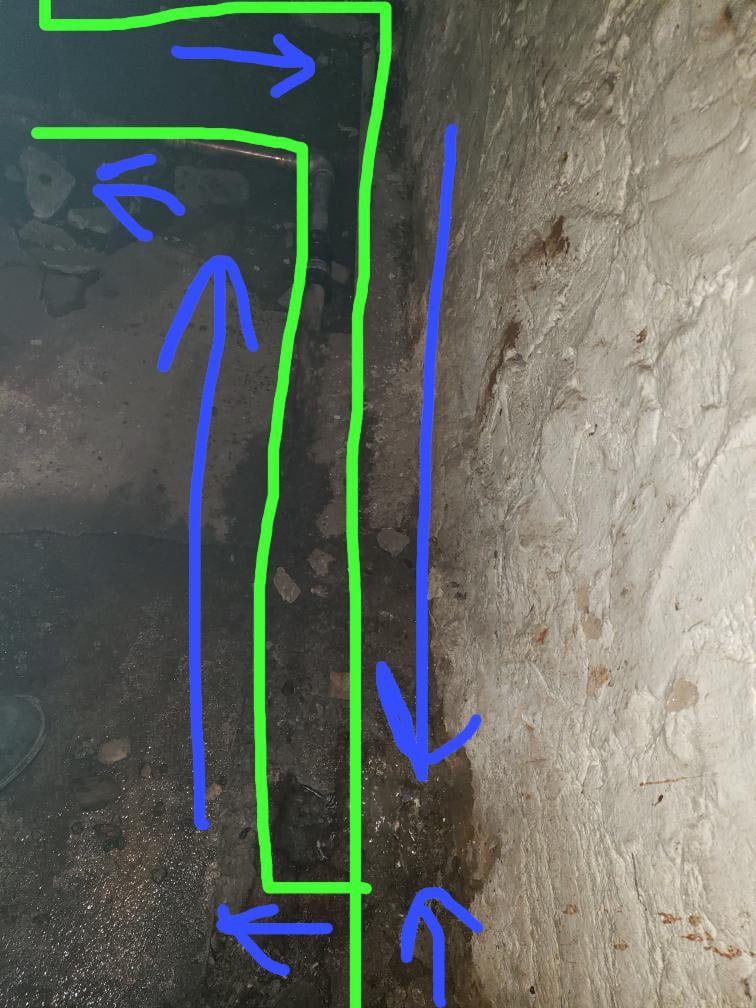Welcome! Here are the website rules, as well as some tips for using this forum.
Need to contact us? Visit https://heatinghelp.com/contact-us/.
Click here to Find a Contractor in your area.
If our community has helped you, please consider making a contribution to support this website. Thanks!
Changing wet return layout
Options
samstu
Member Posts: 14




Hi all,
I’m replacing a section of corroded wet return, and it looks to me like it’s split up in a certain section for no reason. Photos aren’t great so I highlighted the existing wet return in green. In one picture I marked the pipe that looks unnecessary to me in red X’s with the new proposed layout in green.
(One wet return is coming from back of building (at top of picture, and other is coming back from front of building (up from bottom of picture).
I also attached a photo with arrows showing the directions in which I believe the condensate is flowing back to boiler.
Because I’m hesitant to change original (or maybe it wasn’t) layout, I wanted to see if there seems to be an issue with what I’m proposing or if it looks ok.
Thank you!
0
Comments
-
Wet returns are nice. So long as they stay below the water line of the boiler by a few inches, you can run them pretty much anywhere and any way you want to. They can even be run in copper, if you prefer.
A tip, though: it's very nice to have cleanout Ts or at least hose bibbs at strategic locations, so you can flush them out if and when you want to.Br. Jamie, osb
Building superintendent/caretaker, 7200 sq. ft. historic house museum with dependencies in New England0 -
Do you have access to the the other ends of the wet returns?
If so if you could add tees, ball valves and hose bibs.
With this set up on each end you could flush and test for leaks.
Maybe just 15 PSI applied would let you know if leakers underground.0 -
@Jamie Hall does that mean even up and down a couple inches as long as it stays comfortably below the water line? Theoretically it makes sense to me but I seem to recall reading that wet returns should slope slightly down to boiler or at least be level or am I wrong? Thanks for the clean out tip
@JUGHNE
I do not it’s buried and hopefully not leaking we’ll see what happens when the water pressure is no longer escaping from the corroded exposed sections. Can you please elaborate on the optimal setup that will allow flushing the returns in the future?0 -
Wet returns can go up and down and sideways all over the place, just so long as they stay below the water line. The suggestion that they should slope to drain is fundamentally good -- but the idea there has nothing to do with running the system, but with making it easier to flush them out if they get gunked up. Which is why I suggest cleanouts where they change direction.Br. Jamie, osb
Building superintendent/caretaker, 7200 sq. ft. historic house museum with dependencies in New England1 -
@Jamie Hall wow thanks that’s great I never realized that. Makes sense.0
-
IIWM, for flushing I would have a ball valve on each end maybe a foot above the floor, this would isolate the rest of the system from the wet return. Then below that on each end a 3/4" port that would have a hose bib installed. Ideally, with the isolation valves closed, you could take a hose to one end for the pressure flush. Use a double female fitting for the supply hose. Then the other hose bib would drain away to floor drain.
If you have no access to the other end of the return then place the hose bib low on the end of a tee so that you could isolate that return from the boiler and power surge back and forth to loosen sludge up. Carefull to not push water up to the dry return as this could compound things.
If you have leaky pipes you see in the dirt? then you might have some leaks under the floor.
Are you losing a lot of water?0 -
@JUGHNE Thank you for describing the optimal setup, I appreciate it.
Yes we had some leaking sections under ground. It started off in one section and once we replaced that section the pressure just moved on to the next weakest part and exited. Now replaced a large length and hoping that it will hold.0
Categories
- All Categories
- 87.3K THE MAIN WALL
- 3.2K A-C, Heat Pumps & Refrigeration
- 61 Biomass
- 427 Carbon Monoxide Awareness
- 119 Chimneys & Flues
- 2.1K Domestic Hot Water
- 5.8K Gas Heating
- 114 Geothermal
- 165 Indoor-Air Quality
- 3.7K Oil Heating
- 76 Pipe Deterioration
- 1K Plumbing
- 6.5K Radiant Heating
- 395 Solar
- 15.6K Strictly Steam
- 3.4K Thermostats and Controls
- 56 Water Quality
- 51 Industry Classes
- 50 Job Opportunities
- 18 Recall Announcements

